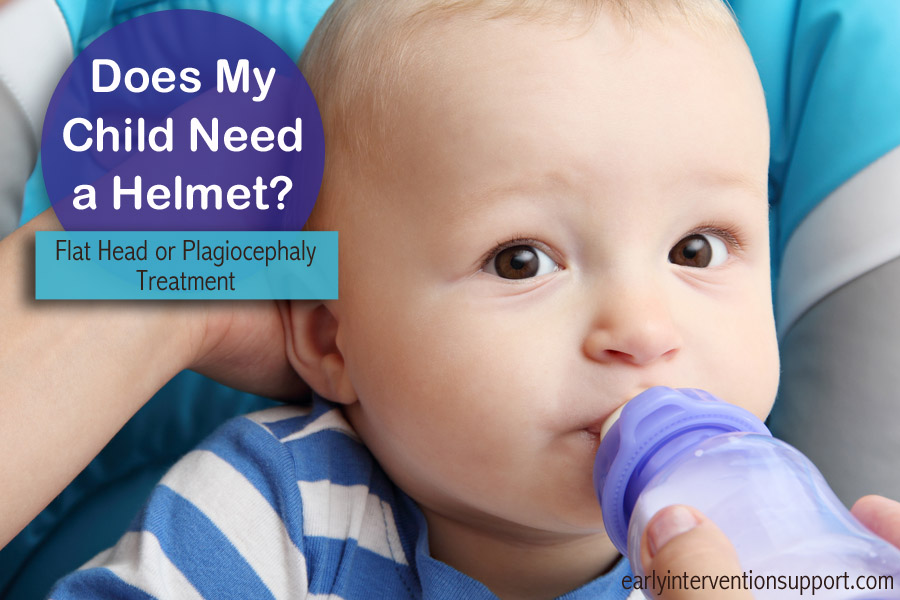As a physical therapist, I encounter this question quite often when treating infants. I also receive questions such as, “If we do our physical therapy, will the flatness improve?” and “If this were your child, what would you do?”
When a physical therapist first evaluates your child, he/she may look at several things, including:
- Location of the flat spot (or plagiocephaly)
- Severity of the flat spot
- If there is a preference to keep the head turned in one direction, or tilted in one direction
- Differences in facial features, ear alignment, or neck creases, from one side to the other
When determining if your child needs a helmet (known as a cranial orthosis), the physical therapist may also take measurements of your child’s head. From these measurements, along with the above evaluation of your child’s head and neck, the therapist can tell you the severity of your child’s flat spot, and if it warrants further attention.
If your child is a good candidate for a helmet, it is often good to know the pros and cons of wearing one.
Advantages of Wearing a Helmet
- Improved head shape, meaning a rounding of the flat spot
- Often improved ear alignment
Disadvantages of Wearing a Helmet
- Potential for skin irritation
- Potential for increased sweating inside the helmet
It is important to note that physical therapy, which may include repositioning, stretching, and strengthening, can improve the shape of a head, but may not completely correct all asymmetries, or flatness. Choosing to move forward in getting a helmet for your child is a big decision. It is a commitment for both the family and child, as the helmet is worn 23 hours a day. The benefit is knowing that, if the helmet is worn properly, your child can show significant improvements in his or her head shape in a matter of weeks to months.
By: Dusanee Weinheimer PT, DPT

